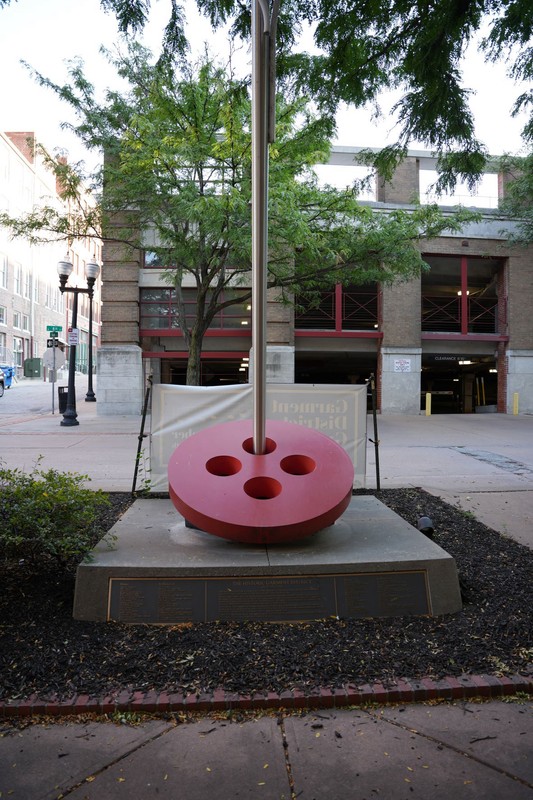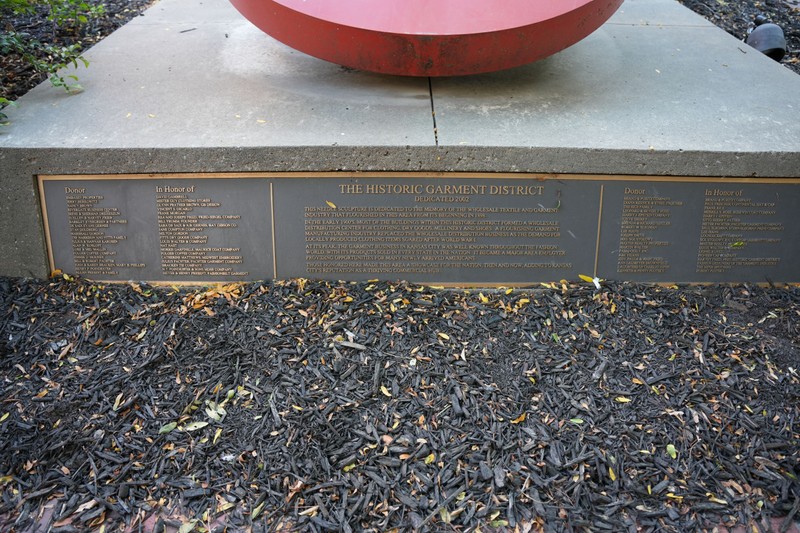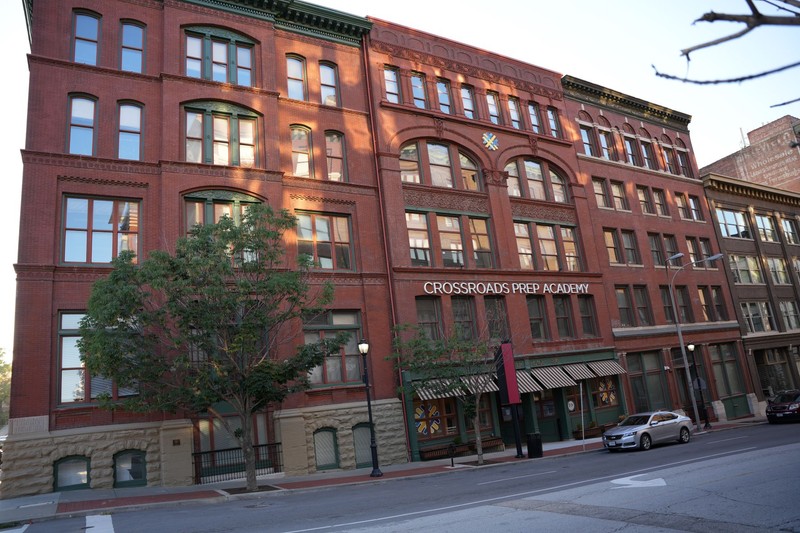The Needle (Public Art) and Kansas City Garment District
Introduction
Author-Uploaded Audio
Learn more about this public art installation and the Garment District from Denise Morrison of the Kansas City Museum
Text-to-speech Audio
Dedicated in 2002, this public art installation by the artist Dave Stevens depicts a button and sewing needle in honor of the neighborhood's history as the second-largest garment district in the United States. The tall needle symbolizes the district's buildings, which was second only to New York City in terms of total garment production in the 1930s. Several of the nation's largest clothing manufacturers operated businesses in the District from the 1920s through the 1970s. Today, many of the former factories are home to loft apartments, offices, and restaurants, but this sixteen-foot needle and thread sculpture on 8th and Broadway, along with several plaques, serve as a reminder of the district's garment-making past.
Images
The Needle & Thread sculpture at 8th and Broadway marks the area where garment workers used to disembark from streetcars.

Dedication plaque

The Kansas City Garment District

Backstory and Context
Text-to-speech Audio
As early as 1898, the historic District supported dry goods manufacturers who shipped their goods to the west. But, it was a Western invention -- blue jeans -- that had a profound effect on the neighborhood. During the California Gold Rush of the 1850s, Jacob Davis and Levi Strauss combined on an idea to create denim pants. The 1873 patent awarded to Davis and Levi Strauss & Company gave birth to blue jeans, which became standard wear among farmers and factory workers during the Gilded Age. Another entrepreneur ready to tap into the blue jean market, H.D. Lee, created a company in 1915 that became one of the first businesses to settle in what would become known as the Kansas City Garment District.
In the early 1920s, several garment manufacturers followed Lee by building shops in the now-historic District. The neighborhood's clothing manufacturers were instrumental in developing a unique "section system" for use with women's clothing, a mass production method of assembly of parts to form a finished garment. Its efficiency and success allowed clothing makers to reduce their costs and greatly expand their businesses.
By the end of the 1950s, some garment makers saw opportunities to save even more money. They picked up and moved their plants to small towns. Still, the Garment District's peak arrived in the 1960s when more than 7,000 workers earned their livings making clothes in the neighborhood.
The garment industry declined steadily after the 1970s. The decline can be tied to several factors, including the emergence of national chain retailers and overseas competition. As a result, the neighborhood slowly lost its identity as the twenty-first century arrived. But, in the last two decades, most of the District's buildings have been renovated to accommodate offices, stylish loft apartments, and various service-industry retailers.
Along with the tall needle and thread sculpture on 8th and Broadway, plaques within the district share the history of Kanas City's garment industry and countless employees' significant contributions to the early Kansas City economy. The sculpture is also near the Historic Garment District Museum of Kansas City. The plaques, sculpture, and museum remind visitors and residents that Kansas City, often known for its railroads and cattle yards, produced twenty-five percent of the nation's clothing.
Sources
Fischer, William. "The Garment District." The Historical Marker Database. HMdb.org. June 16, 2016. https://www.hmdb.org/m.asp?m=43231.
"Historic Garment District Museum of Kansas City." kcparks.org. Accessed April 7, 2022. https://kcparks.org/places/historic-garment-district-museum-of-kansas-city/
LaMartina, Jerry. "Garment District group dedicates sculpture, opens museum." Kansas City Business Journal (Kansas City), October 4, 2002. https://www.bizjournals.com/kansascity/stories/2002/09/30/daily58.html.
"Levi Strauss: Blue Jeans Empire." pbs.org. Accessed April 7, 2022. https://www.pbs.org/wgbh/theymadeamerica/whomade/strauss_hi.html.
"The Needle." kcparks.org. Accessed April 7, 2022. https://kcparks.org/places/the-needle/
Photo by David Trowbridge
Photo by David Trowbridge
Photo by David Trowbridge
